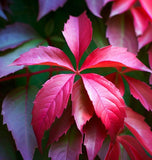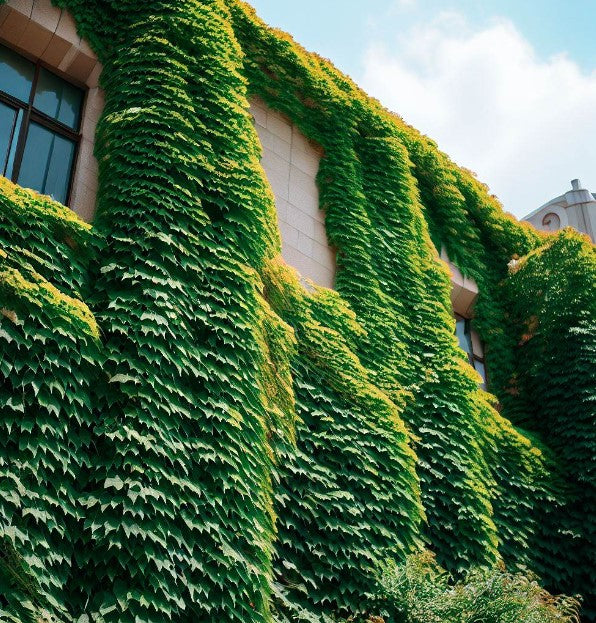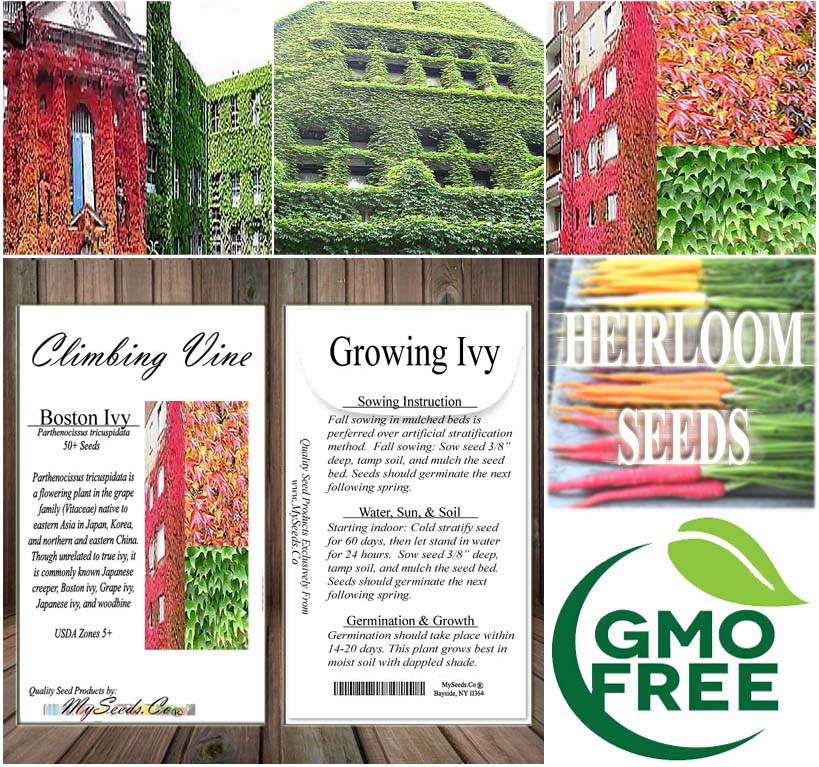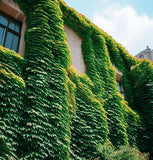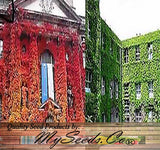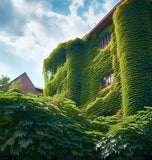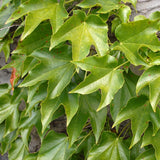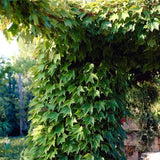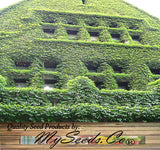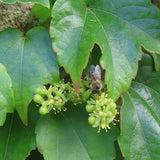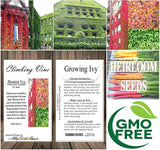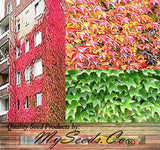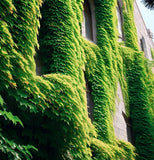Parthenocissus tricuspidata (Boston Ivy, Grape Ivy, Japanese Creeper, Japanese Ivy, Woodbine)
Parthenocissus tricuspidata (Boston Ivy, Grape Ivy, Japanese Creeper, Japanese Ivy, Woodbine) is a deciduous climbing vine native to eastern Asia. It belongs to the family Vitaceae, which also includes grapevines. Boston Ivy is widely cultivated for its ornamental value and is particularly popular for covering walls, fences, and buildings due to its vigorous growth and beautiful foliage.
Growth habit: Boston Ivy is a vigorous, fast-growing vine that can reach a height of 30 to 50 feet (9 to 15 meters) and spread equally wide if left unpruned. It climbs by means of adhesive disk-like tendrils that allow it to attach itself to surfaces like walls.
Leaves: The leaves of Boston Ivy are large and compound, composed of three leaflets (trifoliate) that are typically lobed and have serrated edges. The leaves emerge reddish or bronze in spring, turn green during summer, and transform into vibrant shades of red, orange, or purple in the fall, creating a striking display.
Flowers: Boston Ivy produces small, inconspicuous greenish flowers in the summer. These flowers are followed by small, blue-black berries that attract birds.
Adaptability: Parthenocissus tricuspidata is known for its adaptability and can grow in a wide range of soil types, including sandy, loamy, or clay soils. It thrives in full sun to partial shade conditions, although it tends to exhibit the best fall coloration in full sun.
Climbing ability: As a climbing vine, Boston Ivy requires a sturdy support structure to climb on, such as walls, fences, arbors, or trellises. Its adhesive tendrils attach firmly to surfaces, allowing the vine to climb vertically.
Urban tolerance: Boston Ivy is often used in urban areas due to its ability to tolerate pollution and its aesthetic appeal for covering buildings. It can help insulate buildings, providing cooling shade in summer and acting as a natural insulator in winter.
It's important to note that while Boston Ivy is commonly mistaken for English Ivy (Hedera helix), they are different species. Boston Ivy is a deciduous vine, while English Ivy is an evergreen vine. Additionally, Boston Ivy attaches to surfaces with adhesive tendrils, while English Ivy climbs using aerial rootlets.
Botanical Name : Parthenocissus tricuspidata
Common Name : Boston Ivy
Height : 30 ft
Spread : 15 ft
Germination Info : Seed requires 60 days cold moist stratification
Hardiness zone : 5+
Average seed per ounce : Approx. 875

